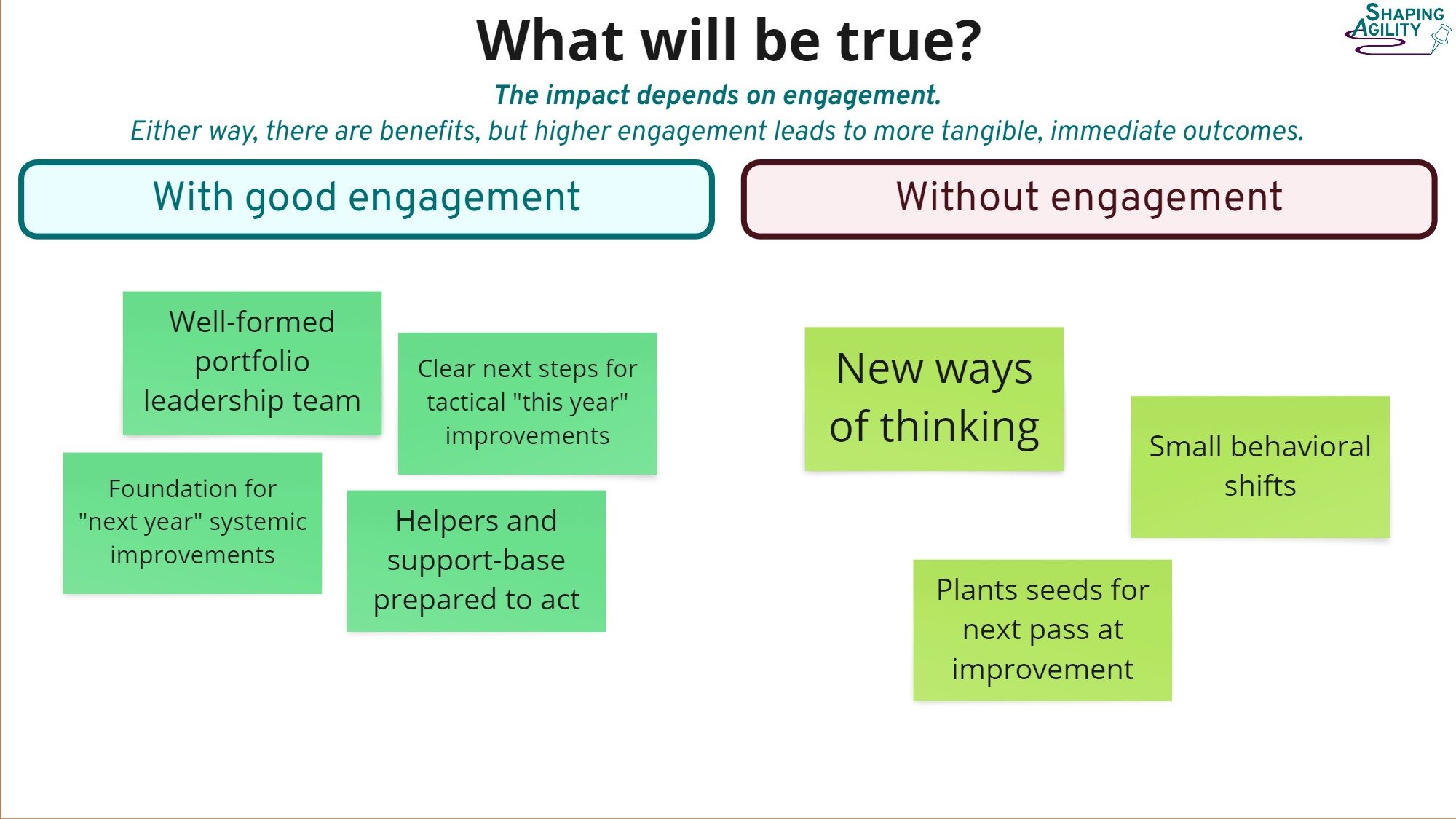What is executive commitment, really?
If only our executives would commit, we could…
“They” don’t support what we’re trying to do…
Interesting words. What do you really want from “them”? Who is this “them” anyway? Is it one leader? Is it a team? Is it really the whole executive team? How do you know they don’t support you? What is this “commit” of which you speak?
I have many opportunities to work with, advise, and directly request action from senior executives. I also have many opportunities to advise coaches and change agents and mid-level leaders on interacting with those executives.
There is a big gap between my immediate experience with well-meaning, thoughtful, powerful leaders and the way I hear them characterized by many of the managers and coaches that are frustrated by or are asking for advice for working with those leaders.
I attribute much of this gap to people having conversations with their stereotype of an executive instead of having conversations with an individual human. I think this unfortunate stereotyping and generalization does a huge amount of harm. Instead of having a meaningful conversation and asking clearly for the things that will move critical efforts into agility forward, coaches instead anticipate resistance and antagonism thus spend most of the time thinking defensively rather than generatively. I don't have an answer for this, but I do have some ideas on how to prepare for important conversations with leaders and anticipate what requests you might need to make.
Be ready!
Know the larger goal, how it serves the company, and why the specific exec values that goal in relation to their role and their extended team. Consider politics as needed, but don’t over-pivot on it.
Know your request spread. More on this below.
Anticipate what fresh information or perspective you’re bringing to the table in the conversation, and then:
Strongly resist including or spending minutes on anything else. Especially avoid spending time going back over familiar territory.
If you must, have a single context slide that you show but don’t read if you must to confirm they’re up to date on any recent activities.
Be prepared to slow down and provide a deeper overview of the initiative or context if needed, but also expect that the person is already surprisingly well informed about what’s going on.
Have a spread of requests ready. Choose one in the moment based on how the meeting is going. I usually have three things in my head:
What’s the minimum we need from this individual to prevent them from disrupting the effort?
What’s the reasonable level of engagement we seek, and where are we asking them to focus that time?
What’s my “wow, they love this, and want to go all in” request?
If I have slides, I’ll typically include the second one, but then pull them in “as a partner” and go “off deck” if they’re showing the all-in emotions during the conversation. The first option is damage control if the meeting goes sideways.
Finally, know what happens with and without their engagement. For example, you’ll see in the image that our Portfolio Pathfinding System has very different expected outcomes depending on the degree of engagement from the leaders that participate. It has impact with even minimal engagement, but it’s truly transformative when the portfolio leadership team leans in. Be prepared to share the person’s impact during the conversation!
If you are willing to try out these ideas and share your results with me, I’d love it even more!

